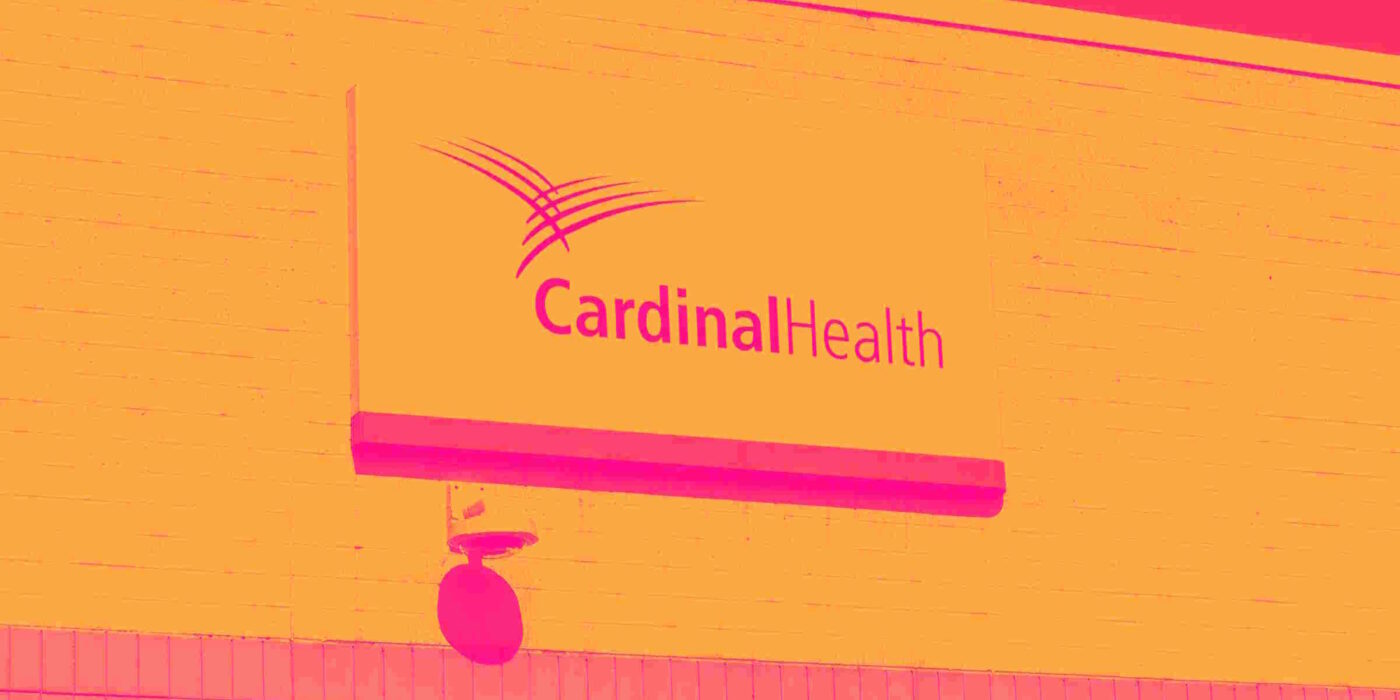
Healthcare distributor and services company Cardinal Health (NYSE:CAH) reported Q3 CY2025 results exceeding the market’s revenue expectations, with sales up 22.4% year on year to $64.01 billion. Its non-GAAP profit of $2.55 per share was 17.3% above analysts’ consensus estimates.
Is now the time to buy Cardinal Health? Find out by accessing our full research report, it’s free for active Edge members.
Cardinal Health (CAH) Q3 CY2025 Highlights:
- Revenue: $64.01 billion vs analyst estimates of $59.36 billion (22.4% year-on-year growth, 7.8% beat)
- Adjusted EPS: $2.55 vs analyst estimates of $2.17 (17.3% beat)
- Adjusted EBITDA: $994 million vs analyst estimates of $844.3 million (1.6% margin, 17.7% beat)
- Management raised its full-year Adjusted EPS guidance to $9.75 at the midpoint, a 3.7% increase
- Operating Margin: 1%, in line with the same quarter last year
- Free Cash Flow was $865 million, up from -$1.74 billion in the same quarter last year
- Market Capitalization: $39.08 billion
"We are pleased with our strong broad-based operational and financial performance to begin fiscal 2026," said Jason Hollar, CEO of Cardinal Health.
Company Overview
Operating as a critical link in the healthcare supply chain since 1979, Cardinal Health (NYSE:CAH) distributes pharmaceuticals and manufactures medical products for hospitals, pharmacies, and healthcare providers across the global healthcare supply chain.
Revenue Growth
A company’s long-term sales performance is one signal of its overall quality. Any business can have short-term success, but a top-tier one grows for years. Luckily, Cardinal Health’s sales grew at a decent 8.7% compounded annual growth rate over the last five years. Its growth was slightly above the average healthcare company and shows its offerings resonate with customers.
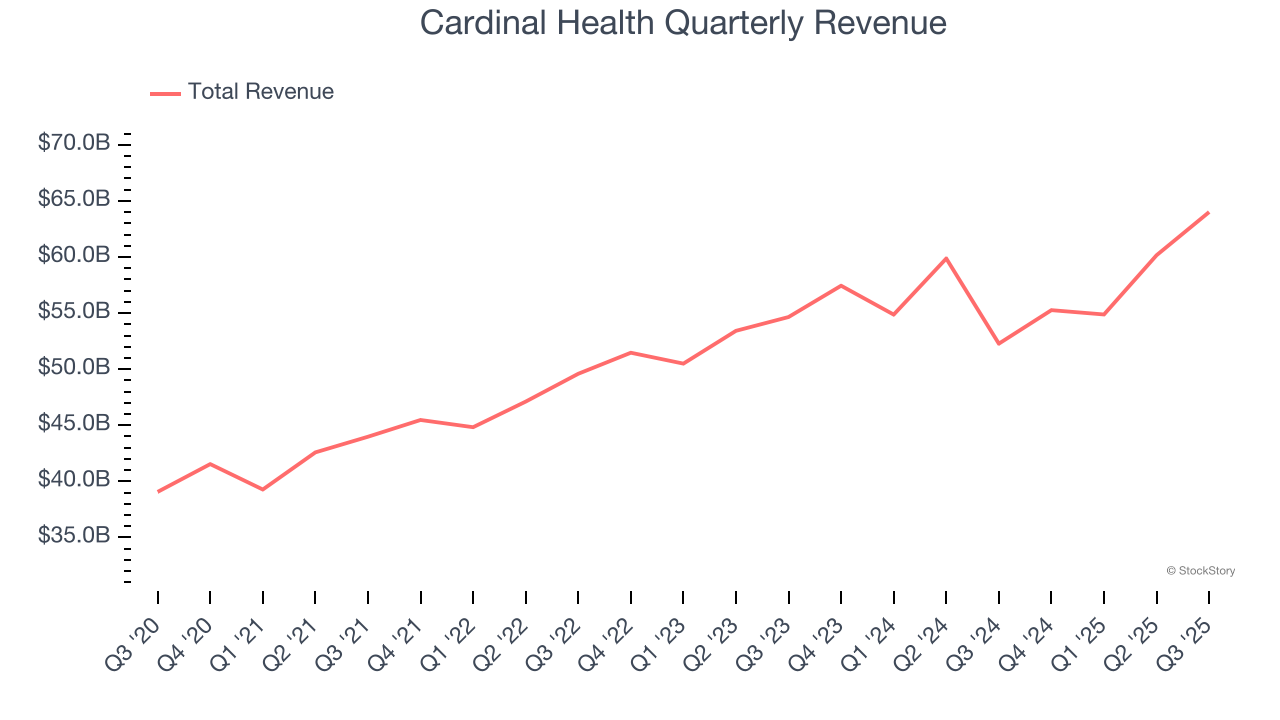
We at StockStory place the most emphasis on long-term growth, but within healthcare, a half-decade historical view may miss recent innovations or disruptive industry trends. Cardinal Health’s recent performance shows its demand has slowed as its annualized revenue growth of 5.6% over the last two years was below its five-year trend. 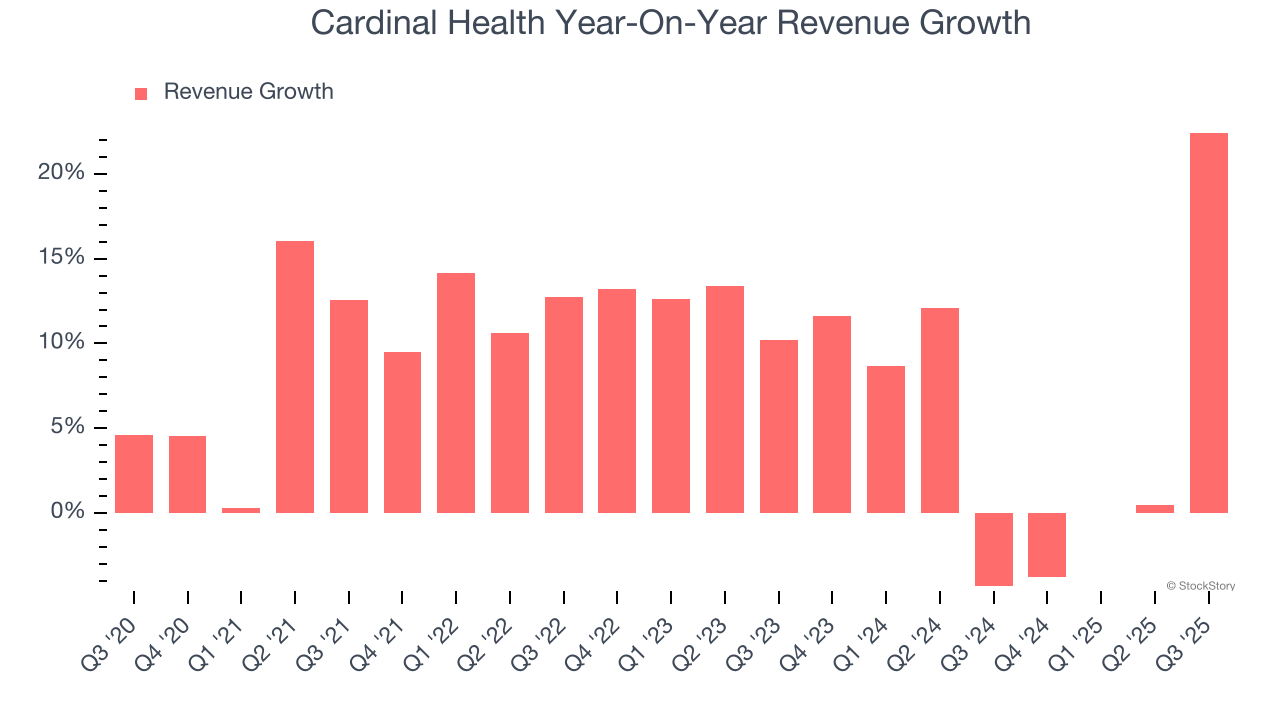
This quarter, Cardinal Health reported robust year-on-year revenue growth of 22.4%, and its $64.01 billion of revenue topped Wall Street estimates by 7.8%.
Looking ahead, sell-side analysts expect revenue to grow 8.3% over the next 12 months, an improvement versus the last two years. This projection is particularly noteworthy for a company of its scale and suggests its newer products and services will catalyze better top-line performance.
Today’s young investors won’t have read the timeless lessons in Gorilla Game: Picking Winners In High Technology because it was written more than 20 years ago when Microsoft and Apple were first establishing their supremacy. But if we apply the same principles, then enterprise software stocks leveraging their own generative AI capabilities may well be the Gorillas of the future. So, in that spirit, we are excited to present our Special Free Report on a profitable, fast-growing enterprise software stock that is already riding the automation wave and looking to catch the generative AI next.
Operating Margin
Cardinal Health’s operating margin might fluctuated slightly over the last 12 months but has remained more or less the same. The company broke even over the last five years, lousy for a healthcare business. Its large expense base and inefficient cost structure were the main culprits behind this performance.
Analyzing the trend in its profitability, Cardinal Health’s operating margin might fluctuated slightly but has generally stayed the same over the last five years. This raises questions about the company’s expense base because its revenue growth should have given it leverage on its fixed costs, resulting in better economies of scale and profitability.
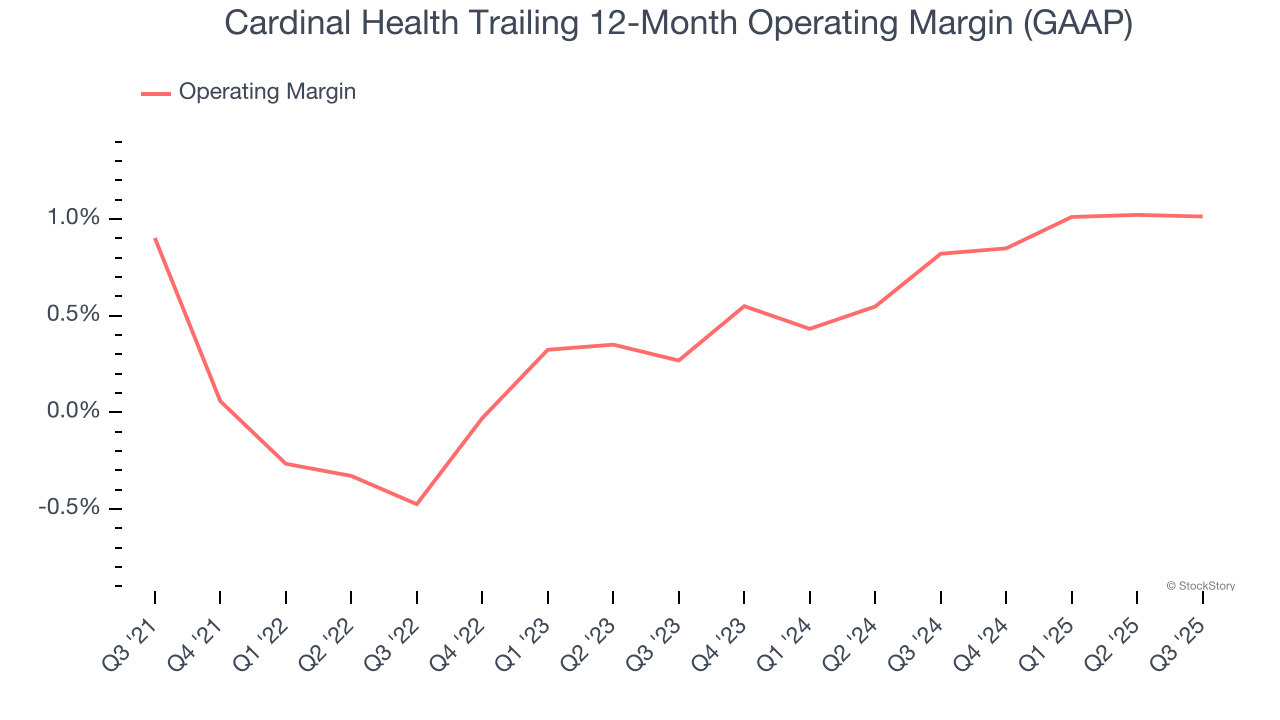
In Q3, Cardinal Health generated an operating margin profit margin of 1%, in line with the same quarter last year. This indicates the company’s overall cost structure has been relatively stable.
Earnings Per Share
We track the long-term change in earnings per share (EPS) for the same reason as long-term revenue growth. Compared to revenue, however, EPS highlights whether a company’s growth is profitable.
Cardinal Health’s remarkable 9.4% annual EPS growth over the last five years aligns with its revenue performance. This tells us its incremental sales were profitable.
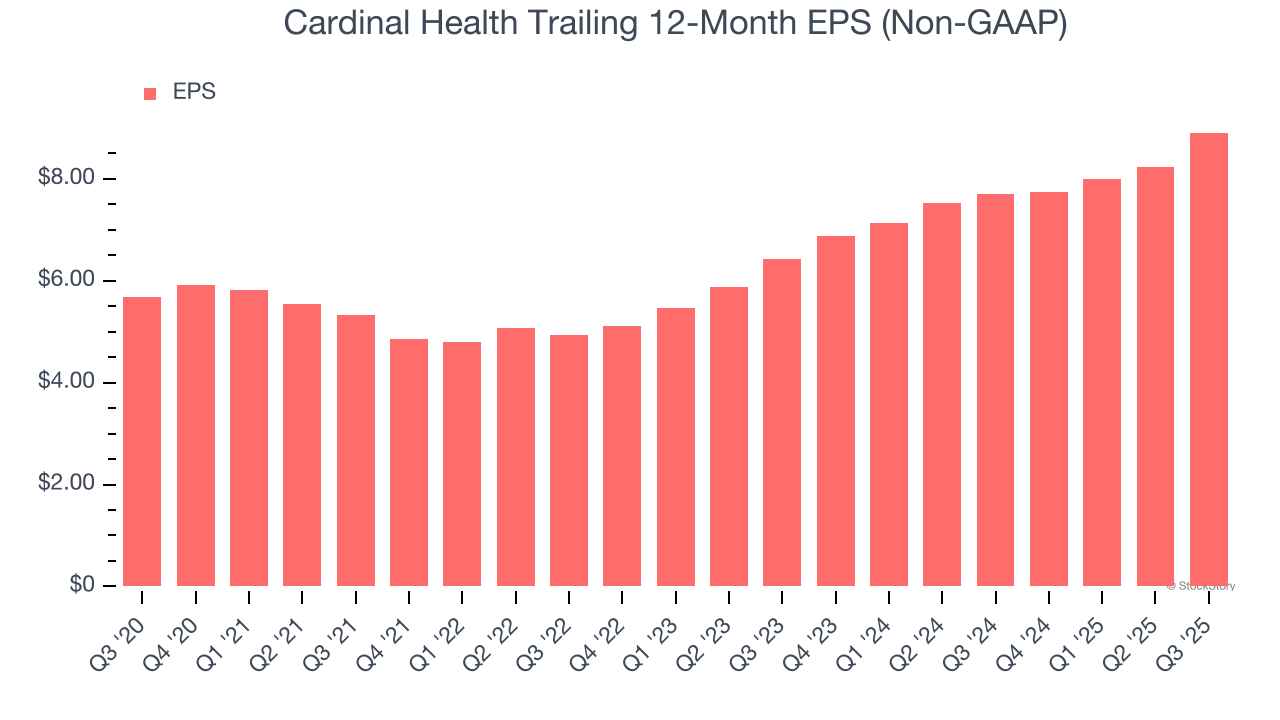
In Q3, Cardinal Health reported adjusted EPS of $2.55, up from $1.88 in the same quarter last year. This print easily cleared analysts’ estimates, and shareholders should be content with the results. Over the next 12 months, Wall Street expects Cardinal Health’s full-year EPS of $8.91 to grow 9.7%.
Key Takeaways from Cardinal Health’s Q3 Results
We were impressed by how significantly Cardinal Health blew past analysts’ revenue expectations this quarter. We were also glad its EPS outperformed Wall Street’s estimates. The company also lifted full-year EPS guidance, which is icing on the cake. Zooming out, we think this quarter featured some important positives. The stock traded up 10.7% to $182.25 immediately after reporting.
Cardinal Health may have had a good quarter, but does that mean you should invest right now? When making that decision, it’s important to consider its valuation, business qualities, as well as what has happened in the latest quarter. We cover that in our actionable full research report which you can read here, it’s free for active Edge members.
